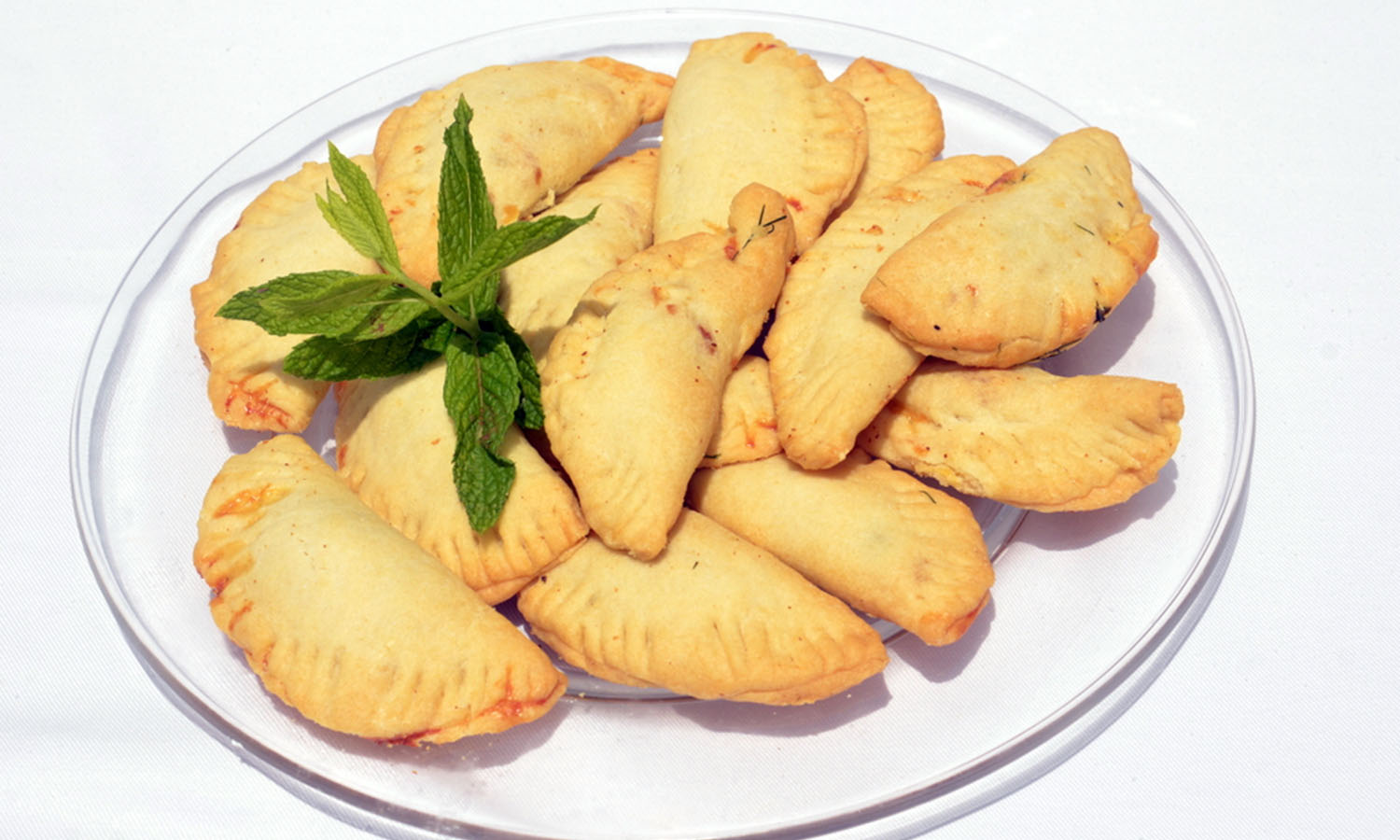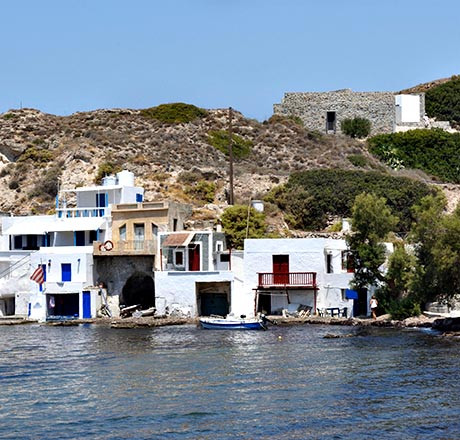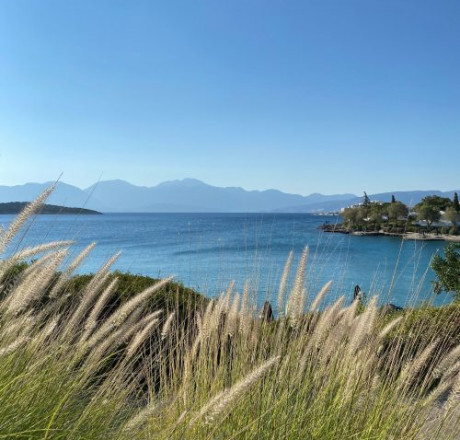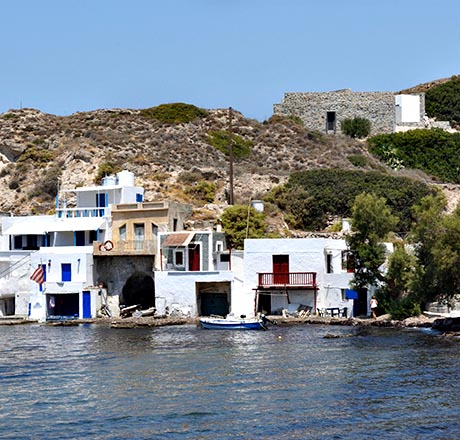Greece
Greece
Aegean Indulgence
Despite the usual international breakfast spread, it is the local fare everyone goes for here: the yoghurt and honey, the Amorgos nut-and-raisin muesli and those honey-smothered sweets for which Greece is so famous. The variety of baked products is startling. From wafer-thin filo delicacies to sesame-sprinkled loaves of bread, the resourceful islanders can produce a lot based on flour and water. Add some oil and the resulting xerotigana (dough sticks) are fried, dipped in honey and sprinkled with cinnamon and sesame seeds. Cracking under my teeth, they fill my mouth with an aromatic mixture of oil and honey. Add yeast and the resulting dough produces loukoumades (Greek donuts). These fried dumplings get the same honey-and-cinnamon treatment but, with their chewy soft centre, taste very different and gradually release the sticky, sweet syrup they’ve absorbed.
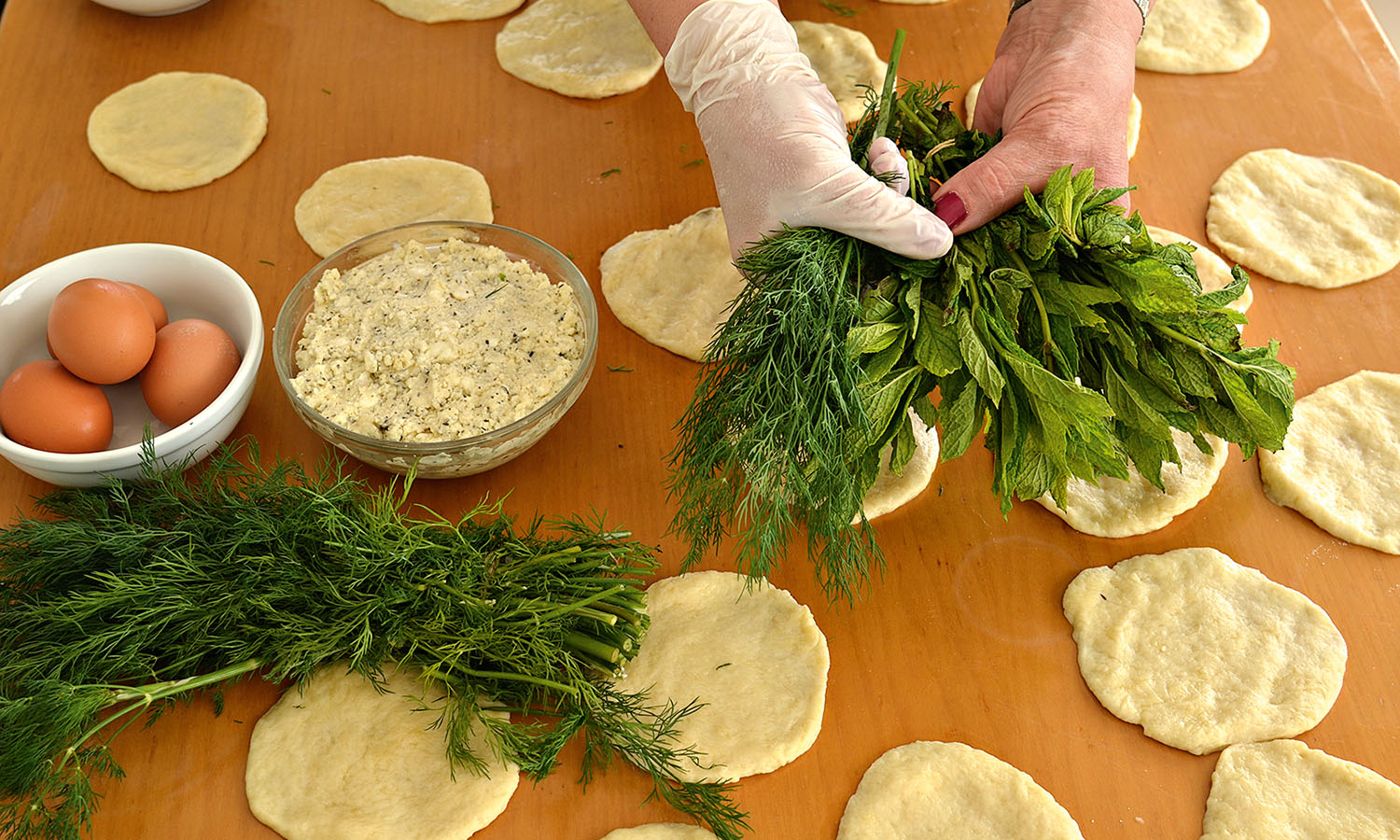

Next to the loukoumades is a Cycladian staple. Amorgian pasteli consists mainly of honey, sesame seeds and herbs, boiled together and set over lemon leaves for flavour. Its high calorific value makes it the old-school equivalent of an energy bar. Homer mentions it in the Iliad, where it is consumed by Greek soldiers during the siege of Troy. Herodotus describes it, too, as does Aristophanes. I have a bite and my teeth stick in solidified goo. This must be the only confection where you can taste every individual kilojoule. I think of my waist to be unveiled later on the beach in all its dubious glory and set the rest aside.
.
Sweets are not part of a regular meal on Amorgos, but are instead usually reserved for special occasions. Pasteli and xerotigana feature heavily in village fetes and saints’ feasts, in family baptisms and marriages. Loukoumades are traditionally eaten on New Year’s Eve and every time there is ‘new oil’ from the olive press. This traditionally happens in late November and coincides with the feast of the Presentation of the Virgin, the biggest local festival. Spending the fresh November oil on loukoumades is an act of luxury, a gesture of defiant waste of the precious new harvest and a hopeful celebration of a year of plenty.
The only thing I would never expect to be added to dough is wine. But then I ask what the savoury turnovers I am stuffing myself with are called. “Drunk Amorgians” is the reply. Because, yes, wine is used in their preparation. Their light, crumbly pastry fuses with the tangy cheese-and-egg filling and the discreet scent of mountain herbs to produce a subtle contrast of flavours, the attribute of a unique dish.
Later Irene Yannakopoulos, the owner, manager and chef at Hotel Aegialis, demonstrates to me how she cooks these traditional sweets and pies. She’s wearing kitchen gloves and standing behind shining stainless-steel bowls, presiding over tablecloths as white as the island’s lime-washed houses. She does this each Sunday and Wednesday, teaching visitors to the island how to make some of the simple baked goods that make a visit to this part of the world so memorable.
This must be the only confection where you can taste every individual kilojoule.
“The cuisine of Amorgos,” Irene says, “like that of every other Cycladic island, depends on its own produce. In the closed, subsistence society of old, you lived from your farm’s own yield.”
She points at the breakfast spread and explains the ingredients her home island produces: “Olive oil, wine and wheat to make flour; fruit, mostly pears, raisins and figs, which we air-dry to preserve. Then there are nuts, pulses and a range of garden vegetables and herbs, like thyme and mint, both of which grow wild. Everything you see there has been grown on Amorgos since time immemorial.
“In my youth, everyone had their own goats and sheep for milk, cheese or yoghurt and chickens for eggs. We ate much less meat than we do today.” On the dry, sun-baked Greek islands the boundless Aegean ensured that seafood was always available, so farm animals were more valuable for what they supplied than for their meat.
“And as sugar came later, we used honey from beehives – and still do in our traditional sweets.”
Born and bred on Aegialis, Irene left as a teenager, not by choice but by necessity. “Forty years ago, the only high school on the island was in Chora, the capital, two hours away on foot from home,” she says.
I try to imagine her walking to school, chewing on a pasteli bar for endurance. I look at the winding coastal highway that snakes out of the village below. Aegialis was only connected by road with the capital Chora, 18 kilometres away, in 1989. It was then that electricity also arrived, too late to change the eating habits of the locals. For what Irene has accidentally just given me was a short, concise summary of that famous Mediterranean diet.
Makes 25
INGREDIENTS
Dough
1 cup olive oil
1 cup dry white wine
3 cups self-raising flour
1 tsp salt
Filling
2 eggs
3 heaped tbsp chopped mint leaves
3 heaped tbsp chopped anise (fennel fronds)
1 onion, finely chopped
¾ cup crumbled feta
METHOD
Preheat the oven to 165ºC. Oil and lightly dust two trays.
To make the dough, combine the oil and wine in a bowl, and fold in the flour and salt. Turn the dough out on to a floured board and knead until it is firm.
For the filling, break the eggs into a bowl and add the mint, anise, onion and feta and combine. You want the filling to be quite solid, so add a little bit more feta if it’s too loose. Season the mixture with salt and pepper.
Using a spoon, cut the dough into small balls then press them on the kitchen counter to make disks about 10 centimetres in diameter. Put a spoonful of filling on the centre of each one and fold it in half. Use the tines of a fork to seal each parcel.
Place the turnovers on the prepared trays and bake in the oven for 25 minutes or until golden. Serve with a classic Greek salad.
You can also use this dough to make sweet amorgianas. For the filling, use a good dollop of your favourite marmalade or jam. Once they’re baked, dust with icing sugar to serve.
 (
(


